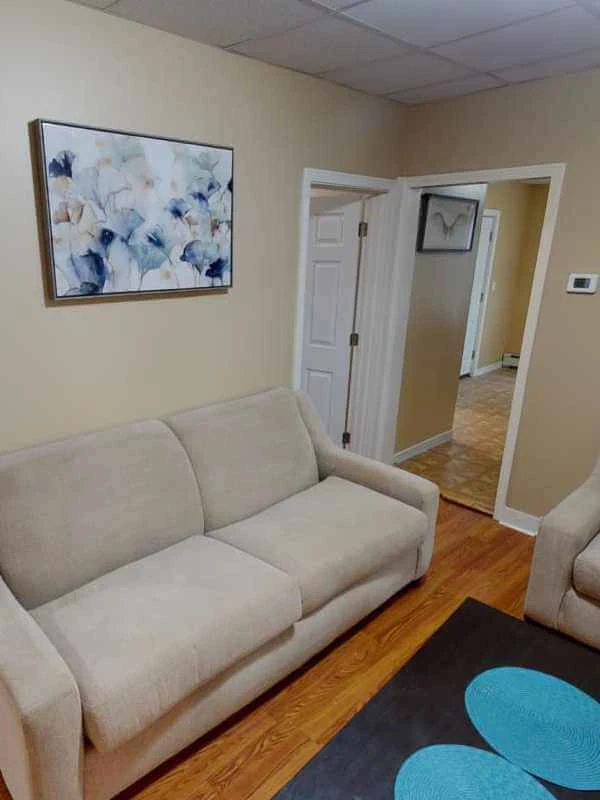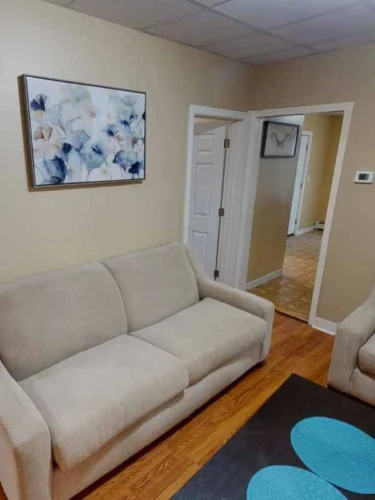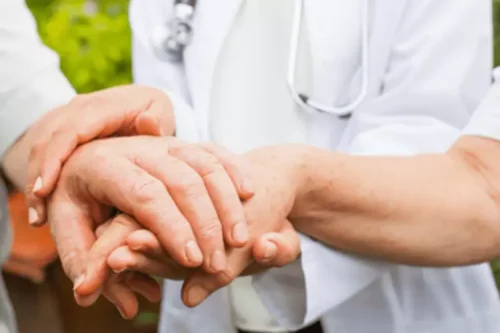The company’s business model is built on residents taking responsibility for their home and their recovery. Calls to the listed sober houses will be routed directly to their sober house. Calls to any general helpline will be answered or returned by one of the top sober house featured on this site.
New Life Sober House: Chelsea House Sober Living
We do not receive any commission or fee based on which sober house you choose. The growth of Chelsea House raises all kinds of possibilities along this line, which is good news for individuals looking for a stable and supportive environment in which to get and stay sober. Transitional housing is temporary housing for the working homeless population and is set up to transition their residents to permanent housing.
Chelsea House
- Calls to any general helpline will be answered or returned by one of the top sober house featured on this site.
- Residents are engaged in their personal recovery journey by attending meetings and working with a sponsor and the house manager for support and encouragement.
- Our homes are located in Massachusetts, Rhode Island, Connecticut, and Maine.
- Our sober living homes allow for independence; however, they are guided by a set of recovery-focused house rules, standards, and expectations.
- We do not receive any commission or fee based on which sober house you choose.
As is true of other sober living facilities, Chelsea House requires abstinence from drugs and alcohol. Residents are engaged in their personal recovery journey by attending meetings and working with a sponsor and the house manager for support and encouragement. Residents adhere to a curfew, submit to drug and alcohol screenings and participate in home and community events. We see a world where every person in recovery has access to a supportive, healthy, and safe home environment built on respect, focused on recovery, and led by peers. Our homes are located in Massachusetts, Rhode Island, Connecticut, and Maine. The Chamberlain Home in Southbridge is one of a number of sober living facilities Chelsea House owns and operates in Massachusetts, Rhode Island and Maine.
For More Information on Sober Living Homes Call: 1 ( 909 1894
“It’s a challenge being able to work with independent operators who have experience,” Mr. Foote said. “We attract individuals who are more serious” about being part of a life-changing initiative, he said. He relishes talking about the endeavors his company is undertaking to help men and women try to shed the ruinous effects of alcohol and drugs. “Indeed, we are opening the home in Southbridge in short order.
Search for Transitional Housing
- As is true of other sober living facilities, Chelsea House requires abstinence from drugs and alcohol.
- He relishes talking about the endeavors his company is undertaking to help men and women try to shed the ruinous effects of alcohol and drugs.
- Calls to the listed sober houses will be routed directly to their sober house.
- “Indeed, we are opening the home in Southbridge in short order.
- When we spoke, Chelsea House’s new facility in Southbridge was in the process of being set up, and completely renovated.
- Residents adhere to a curfew, submit to drug and alcohol screenings and participate in home and community events.
We lead the best sober living homes in New England; structured sober house communities where those in recovery live together as a family to develop the tools and strengthen their character in order to live free from substance abuse. Our sober living homes allow for independence; however, they are guided by a set of recovery-focused house rules, standards, and expectations. The core of our recovery home structure is abstinence from drugs and alcohol. A new residence in Southbridge, set to open on Main Street this month, typifies Chelsea House’s rapid growth as a provider of structured and certified sober living for men and women in a recovery-focused and peer-supported environment.
The Chelsea House
The rest (towns like Dudley, Oxford and Charlton, and Putnam and Thompson, for instance) are a bit too small to support a largely walking-only population. We would be happy to explore Connecticut as well,” however, he said. When we spoke, Chelsea House’s new facility in Southbridge was in the Chelsea House Review process of being set up, and completely renovated. The day-to-day workings of Chelsea House’s homes are governed by a handbook and house rules.
During the COVID-19 pandemic, multiple public health campaigns encouraged using face masks, social distancing, and regular hand washing. Vaccines and improved sanitation have also been invaluable in preventing the spread of communicable diseases. Collectively, educational programs, preventative measures, and treatment interventions help curb the spread of infectious diseases while fostering global well-being.
- These techniques facilitate a shift in focus from problems to solutions, allowing individuals to envision a future where their desired outcomes have been achieved.
- We’ve compiled proven strategies for delivering consistent customer service.
- The best way to get the attention of someone who is struggling with substance use disorders or an alcohol use disorder is by an intervention.
- This committed group of people collaboratively to build an environment where the individual can be encouraged to accept help and professional treatment for their substance abuse problem or mental health condition, including mental illness.
Tax implications of retirement withdrawal strategies
Social workers have a vital role to play in supporting individuals who are going through difficult times. To provide practical assistance, social workers must take a comprehensive approach and consider the client’s background, values, mental health, risk factors, strengths, skills, resilience, and goals. By doing so, social workers can determine the most appropriate intervention strategies and involve the client. Working collaboratively with the client is essential to develop an approach that both parties feel confident with. Selecting the proper intervention method requires careful consideration of the client’s preferences, resources, and support systems. Social workers can guide their clients toward overcoming challenges and achieving their goals by adopting a constructive approach.
Behavioural Interventions
For a detailed exploration of these intervention types, continue reading the respective sections in this article. A third theory is that behavioral experiments need to be carried out for a long time to have any effect. But many of the behavioral experiments that have been conducted lasted for 5 to 7 years. That is a long period of time by the standards of many successful interventions. Within 6 years of the Surgeon General’s report on the harms of smoking, for example, cigarette consumption fell by nearly 10 percent.
Cigarettes are not allowed to be sold to minors (although this is frequently violated), and smoking is now prohibited in many buildings and public spaces. We identified https://appsychology.com/living-in-a-sober-house/ therapies according to 10 different therapeutic approaches, as summarised below. To start using metacognitive strategies now, begin by modelling your thinking. The aim is to give children a script to follow when working through a process. The participation of friends and colleagues in the intervention underscores the message that the individual’s alcohol abuse has repercussions that extend beyond the immediate family.
The five examples of interventions set out here are described in general terms. You will probably need to adapt them to your learning environment and target pupils. That’s not to say they won’t impact behaviour sober house – more confident learners generally make better choices – but they’re designed to help children progress academically.
Interdependent Nursing Interventions
Aside from smoking, where some reduction was expected in the control group, these risk factor changes in the control group were unexpected. As a result, the net change in risk factor control for the intervention group was below expectations. Cigarette smoking declined by more than the forecast amount, but the decline in blood pressure was only 75 percent of expected levels, and the decline in cholesterol was only half of expected levels. The MRFIT investigators expected significant reductions in all three risk factors. If achieved, these changes would translate into a 27 percent reduced chance of coronary heart disease mortality. Public health interventions targeting communicable diseases often focus on promoting healthy behaviors and educating the public about how illnesses spread.
Transform power plants
Debates around these conservation measures are complex, but for too long they have neglected Indigenous knowledge systems in favour of Western perspectives. A tension that runs through these debates is that although ecosystems are in desperate need of protection, the human fingerprint these measures leave behind may itself be an ‘unnatural’ disturbance. Although the degree to which this is viewed is acceptable will vary, the framing of humans as distinct from nature may limit action at a time when it is needed most. Plant scientists have long been familiar with the divisive discussions around GMOs. I remember when we used to mention a positive memory, but lately, things seem to have changed.
- Zappos even sends customers to competitors if they cannot meet their needs, showcasing transparency and commitment to customer satisfaction.
- Some studies find positive effects, others find inconclusive effects, and still others find negative effects.
- These tools can deliver psychoeducation, mood tracking, and reminders for medication or appointments.
- Similarly, the movement against drunk driving pushed by Mothers Against Drunk Driving and the designated driver campaign have reduced the share of traffic fatalities involving drunk drivers.
- In the Stanford Five City Project and the Minnesota Heart Health Program, for example, knowledge of coronary heart disease risk factors rose significantly more in the treatment group than in the intervention group.
Micro-level interventions are aimed at individuals, couples, or families to deal with personal issues and bring about positive change. As a social worker, your role could involve providing counseling, skill-building, therapy, advocacy, case management, crisis intervention, or narrative therapy services to your clients. This includes assisting clients in developing coping strategies for anxiety or helping families find community resources. Some major communicable diseases in developing countries depend onvector and intermediate hosts for their transmission.
Addressing pain improves the client’s experience and can facilitate mobility, which is essential for healing. Nurses are also essential in providing postoperative care to clients to promote healing and prevent complications. Client education plays a crucial role in the management of chronic conditions. Effective monitoring and chronic disease management are essential to prevent complications and maintain a client’s quality of life. Nurses should use various pain assessment tools, such as the Wong-Baker FACES Pain Rating Scale or Numeric Rating Scale, to quantify pain levels and assess the impact on the client’s daily activities.
A professional interventionist plays a crucial role in strategizing, implementing, and following through with an intervention. Their primary objectives are to educate the family of the person grappling with substance abuse about the nature and implications of addiction and to underscore their pivotal role in the recovery process. Social workers need to possess excellent communication skills to establish a connection with their clients who belong to diverse backgrounds. They should be empathetic listeners and pay close attention to their clients’ situations to build mutual trust and respect. Social workers must have strong verbal and written communication skills to advocate for social change and clearly and accurately convey their ideas, interventions, and strategies clearly and accurately. Engaging in compassionate dialogue, asking thoughtful questions, and having difficult conversations are all necessary skills social workers must possess.
Techniques Used in Psychodynamic Interventions
For instance, the social worker might ask questions like, “What do you enjoy about your current situation?” and “What do you not like?” to help the client weigh the advantages and disadvantages of maintaining the current state versus changing. Additionally, technology has enabled the development of virtual intervention tools such as mobile apps and telehealth services, allowing nurses to provide interventions remotely. Counseling plays a vital role in supporting clients during challenging times, particularly for those experiencing acute stress or crises related to their mental health.
Summary of National Interventions
One possibility is that the background knowledge dissemination was close to mimicking what the treatment group received. Thus, there might have been little additional information from the intervention. A more refined version of this theory is that only a certain number of people are “ready to change,” and that this ready population in both the treatment and control groups was reached through general information. The intervention had little effect because only a small push was needed to get the trial participants to do better. One of the premises of the MRFIT trial was that information itself is not enough.
Art and music therapy provide alternative ways to express emotions and process trauma, especially in contexts where mental health is stigmatized. These therapies can be conducted in group settings with minimal resources, making them accessible to a wide range of people. Art and music therapy can be particularly beneficial for children and adolescents and has been shown to be effective in post-conflict settings. Models include problem-solving, solution-focused, cognitive-behavioral, and strengths-based.
It includes tools for content creation, automation, tracking of leads, and analytics. Marketers can use this platform to create personalized and unique customer journeys, and reach their target audiences more effectively. Mobile-optimized ads and content personalization are good examples of using a consumer marketing strategy to target and convert a consumer market successfully. WhatsApp’s queuing solution offers a familiar and user-friendly interface, making it easier for customers to track their service progress and feel supported. A protected roadmap is a strategy that ensures essential customer service operations remain unaffected by sales-driven demands or other business priorities.
For example, at the beginning of the program, residents will use a house phone instead of a cell phone to disconnect from digital distractions and social media. As they progress through the program, they can use their cell phones to practice balance. After graduating from New Life recovery house in 2022, he embarked on a mission to pay it forward. As a dedicated sponsor, he extends his hand to guide others through their own recovery journeys, nurturing a sense of belonging within the community. His tenure at Clear Behavioral Health deepened his understanding of the complexities within the community, equipping him with invaluable insights to facilitate recovery for the young men who cross his path.
- As a result, these will allow young men to learn and practice a range of skills for their well-being to live a balanced and healthy life.
- Here, clinical treatment services take up a good chunk of time during the early stages of the program.
- What stands out most is not just the number of people the organization serves, but also the remarkable opportunities it creates for our community to get involved.
- This house has helped give me hope again and for that I will be eternally grateful.
- Dr. Josh Lichtman is an experienced psychiatrist who has been practicing for close to two decades.
Complete our form and we’ll respond quickly to let you know if your items are eligible for our pickup services. He is passionate about both mindfulness and psychiatry, and seeks to blend the two. Although he primarily focuses on TMS and psychopharmacology, he is trained in various modalities of psychotherapy including CBT, DBT, EMDR, and Psychodynamic Psychotherapy. He is a clinical instructor at UCLA, and has been selected to be on the list for Southern California Super Doctors for 2021, 2020, 2019, 2018, 2017, 2016, and 2015. Dr. Lichtman brings his extensive experience with addiction psychiatry to serving the young men of Hope House Boston Boston.
Thereafter, Robert has had experience fostering recovery within the New Life and AA community in many different capacities. He strives to utilize this experience to create an environment conducive to long term success and sobriety. Robert is not only a group facilitator, but also a life coach and sponsor for many within the recovery community at large, whilst also pursuing his degree in International Studies and Japanese Language at CSU Long Beach. Allowing you the perfect environment to build life and coping skills in a new and supportive sober living home surrounded by the recovery community of our Alumni.
An Aged Out Teen
This program not Hope House Boston Boston Boston Review only prepares these young men to achieve sobriety but it also gives them the tools to sustain it. This program provides parents the support to stay involved in the recovery process and embark the family in a healing path (something that seemed impossible in the midst of addiction). As our son actively works the program, we, parents, are given the tools and education to repair and foster healthy family dynamics and strive for a joyful life. We saw our son mature, we matured and learned a new way of life by setting boundaries for our adult child while loving him unconditionally. This program encompasses all the stages of recovery in a comprehensive way and provides a community for them to thrive.We are very thankful to everyone at New Life for saving so many lives.
- If it’s football season he will be sitting at home watching the Cornhuskers.
- Sober living houses are not halfway houses, and are also called “transitional living” or “recovery residence programs.” We are different from traditional sober living due to our approach and services.
- I have so many people to thank, the guys in charge of my son who have become my family and geoffrey’s family as well.
- They may also provide aftercare options, including access to support from staff members after the person has left the home.
Additionally, gender and age-specific programs ensure that individuals will feel comfortable and supported in their sober living environment. We focus on developing life skills, guidance, and peer support, and offer relapse prevention strategies. This means addressing their mental health, and engaging in mentorship and programming. All of these are key components needed to overcome anxiety, depression and substance use. As a result, these will allow young men to learn and practice a range of skills for their well-being to live a balanced and healthy life.
Family Support at our Southern California Sober Living
We have homes near Redondo Beach and Los Angeles to help young men with personalized program options. Additionally, we can help them with employment or education opportunities, and ongoing recovery support. One of the primary benefits we offer our residents is there is no set limit to the length of residency. Patients are free to live in one of our homes as long as necessary. We understand the importance of allowing them to work on your recovery at their own pace.
Our Sober Living Homes in Los Angeles
In fact, many former residents return to offer their own insight, as well as guidance to those now living in the home. Our structured sober living in Los Angeles, California, has paved the way for young men to create successful lives and fulfilling futures. With the help of our program structure, caring staff, loving community, and decades of experience, we can build something beautiful… together. This facility helps young people develop good life skills and transition into independent living while providing a strong mental health component delivered by a clinical team. Residents are also provided structure while learning these aspects of living. Your donations make a HUGE impact on our community and neighbors in need!
Our son entered the New Life Program at Miracle House fifteen months ago at the age of 35. My wife and I were at the end of the road in having any hope that he had much longer to live due to his lifestyle and his behavior. Plain and simple, Hope House Boston Boston is amazing…it’s hard for me to describe in words how wonderful this program really is. i can truly say that as a mom, they have given me my son back. When he went into the program 15 months ago, he was a shell of himself, with no self esteem, no confidence and no sense of self. He was an active alcoholic who had no idea how to navigate his way through life as an adult without using alcohol to distract him. Throughout his months at new life, he slowly learned how to love himself, to gain confidence and to truly learn what it means to be at peace.
Healing within like-minded communities is essential for a young man’s recovery from addiction. Having a support system and sober friends aids with the difficulty young adults face in today’s social climate. Participating in a community of like-minded men helps to keep them from social scenes such as bars, nightclubs, and house parties where alcohol and drugs can be easily accessed. Los Angeles’s sober living community is highly regarded because it offers residents fun activities, sunny scenery, and necessary accountability as they integrate back into society.
Cole has a unique passion for helping young men recover and create the life they’ve always dreamed of. In his spare time, you can find Cole on the tennis court, or curled up watching a good film. New Life involves the families, and gives these young men long term community. The ongoing relationship with the program is what keeps them sober long term. We knew right away that our son was going to the right place when everyone I talked to was either alumni of the program or a parent of the alumni.
Our Team
Hope House Boston Boston is not a place where young men are left to get sober alone — it’s a home where the core and chosen family come together to support your loved one at every step of their recovery journey. Proudly providing a community-driven, structured approach to sobriety for young men and transforming families lives in the South Bay for over 35 years. We restore hope, dignity and stability by delivering donated furniture to families recovering from homelessness. The Harrison Wagner Scholarship Fund was created by Jack Wagner and Kristina Wagner in honor of their son Harrison Wagner. Harrison was a bright, exuberant young man whose smile lit up any room he was in. He has left behind many men and family members who loved him deeply.
Having been involved in service organizations for many years, I’m truly impressed by New Life Warehouse’s ability to unite people in serving others. You start to recover and finally get a new place to live but you have nothing to furnish it with. New Life Warehouse helps fill empty rooms to truly make a house a home. You start to recover and finally get a new place to live but you have nothing to furnish it with. The spirit of the New Life sober living in California is something you won’t want to miss. At first glance, you’ll feel the love and camaraderie that pervades these young men.
He’s had experience night managing at New Life East for 6 months as well as weekend managing at East for about 9 months as well. Colby enjoys making new connections with everyone he meets, and has positive outlook on life. John Twomey came to Hope House Boston Boston over 4 years ago from South Carolina. He prides himself being a part of the community, as well as being a part of the guys lives. He strives to create the same environment that he experienced so that can be the case for others.
Staying sober is not just about abstinence from drugs and alcohol–it is about addressing the emotional underlying issues. It is also about learning healthy habits and embracing a new life, free from substances. During the early stages of recovery, the risk of drug and alcohol abuse relapse is highest. To make matters worse, parents and family members often feel overwhelmed when trying to locate a suitable halfway house for a child or other loved one. Nevertheless, halfway houses in Los Angeles offer the necessary support, encouragement, and stability crucial in early recovery. Our guide can further help you understand how a halfway house works and find the right one for you here in Los Angeles, California.
Our compassionate staff understands that the transition from treatment to the real world can be challenging. That is why we are dedicated to creating sober living homes in Los Angeles that facilitate personal growth while promoting independent living skills. Each of our team members has extensive experience in the treatment of addiction and mental health disorders and is ready to help you achieve a fulfilling life of sobriety—one step at a time. When there is a strong bond among house members, the chance for long-term sobriety success is significantly increased. Thanks to peer grouping, friendships made in the houses last long after graduation from our sober living homes. A like-minded support group is essential for long-term success in any type of program that encourages permanent change.
About Hope House Boston Boston Sober Living
Hope House Boston Boston is a structured sober living in Southern California for young men in Los Angeles. Our locations on the sunny coast of Los Angeles are ideal for relaxation and recovery. Furthermore, Southern California has a strong sober community wherein our residents can feel motivated and supported by peers throughout their recovery journey. While other considerations can factor into their decision, these guidelines can serve as a starting point when searching for a sober living house. Just like an addiction treatment program, a sober living facility should meet the needs of the loved one someone is wanting to help.
Many traditional sober living is simply an environment where someone can go to sleep, live, and get drug tested once a week. Next, several sober living claims to be “structured sober living,” with some light house scheduling, potentially a weekly house meeting, and some general guidelines that residents must follow. My first experience with New LIfe Warehouse was serving as a volunteer to stage furniture for new clients. The mission is clear, the logistics are solid, and the impact is so tangible. Merging my passion for decorating with my heart for service felt like a dream come true!
Though there is no way to know for sure what happened to these participants, a prudent approach might have been to https://beauty-blog.org/how-to-get-rid-of-blackheads-on-your-inner-thighs/ consider these individuals as unstable resolvers characterized by binge drinking and one or more relapses to alcohol use disorder given these participants had similar alcohol problem severity to other groups at baseline. Third, given the authors’ focus on predicting natural recovery success, they required an outcome distribution at follow-up with many stable abstinent or low-risk drinking recoveries. Thus, because of generally high relapse rates among individuals in early alcohol use disorder recovery, the studies included in this analysis deliberately oversampled individuals with some initial success in abstaining or drinking moderately, to ensure they would have enough individuals in stable recovery to analyze. As such, it cannot be known if their findings would be the same with a sample more akin the actual population of individuals with drinking problems. As hypothesized, the two highest functioning profiles at three years following treatment (profile 3 and 4) generally had the best psychological functioning outcomes, including greater purpose in life and lower levels of depression, at ten years following treatment.
Identify Your Personal Triggers

Alcoholic liver disease (ALD) is caused by excessive alcohol consumption, which is defined as five or more drinks in a day or 15 or more drinks a week for men, and four or more drinks a day or eight or more drinks a week for women. The question remains, however, whether such extensive damage can be reversed after abstaining from alcohol. Researchers have studied the effects of abstinence on the brains of alcohol-dependent individuals by comparing subjects recovering from years of alcohol abuse with those who do not drink or drink minimally. Scientists have also investigated changes in brain volume in initial versus sustained abstinence in one set of subjects. On balance, similar to AA’s view that recovery is optimally broad in scope, these recent consensus definitions of recovery focus heavily on enhanced well-being and functional improvements in areas adversely affected by drinking. They do not emphasize or are silent about changes in drinking or achieving abstinence.
- Furthermore, beneficial changes in limited areas of alcohol-related dysfunction and reductions in drinking can occur that contribute to improved health and well-being, even if they fall short of traditional definitions of recovery that emphasize abstinence as a required element.
- Many people with alcoholic liver disease are deficient in B vitamins, zinc and vitamin D and it may become necessary to take supplements.
- Interestingly, we observe a loss of delta power modulation in non-REM sleep during the light cycle.
- M. Jellinek led several initiatives aimed at increasing the study and dissemination of science related to “alcoholism,” including early work studying members of AA and patients in treatment.
- Rats exposed to alcohol vapor to the point of dependence displayed increased alcohol intake, compulsive drinking measured by progressive-ratio responding, and persistent alcohol consumption despite punishment compared with control rats that were not exposed to alcohol vapor.
- In a separate study, local BF infusion of alcohol produced a significant increase in extracellular adenosine.
NIAAA Recovery Research Definitions
- There are three stages—alcoholic fatty liver disease, alcoholic hepatitis, and alcoholic cirrhosis.
- Whether you care for youth or adults, you are likely to encounter patients with alcohol use disorder (AUD) regularly in your practice.
- Indeed, our findings revealed a lack of a one-to-one correspondence between drinking behavior and psychological functioning during the process of recovery over time.
- Drugs of abuse, including alcohol, are known to alter the function of cortical and basal ganglia circuits, and drug actions in this circuitry are thought to contribute to high alcohol intake and disorders involving alcohol abuse.
- For those experiencing alcohol-related functional impairment2 and other adverse consequences, recovery is often marked by the fulfillment of basic needs, enhancements in social support and spirituality, and improvements in physical and mental health, quality of life, and other dimensions of well-being3.
Although several sleep factors have been identified and implicated to mediate the build-up of sleep pressure during wakefulness, only adenosine has gained the utmost attention because adenosine links sleep with energy metabolism and neuronal activity (Thakkar et al., 2014). During wakefulness, energy (ATP) usage is high in wake-promoting systems, due to increased neuronal firing, synaptic activity, and synaptic potentiation. This increased energy usage during wakefulness is reflected in increased accumulation of extracellular adenosine, a breakdown product of ATP metabolism, which corresponds to increased accumulation of sleep pressure. The longer the period of wakefulness, greater the accumulation of sleep pressure and/or AD and the longer it takes for sleep pressure to dissipate during sleep (Thakkar et al., 2014). Whether you care for youth or adults, you are likely to encounter patients https://rupeek.ru/en/est-li-tabletki-podobnye-omeprazola-noveishie-chem-zamenit.html with alcohol use disorder (AUD) regularly in your practice. According to a 2022 national survey, about 1 in 7 men, 1 in 11 women, and 1 in 33 adolescents (aged 12-17) meet the diagnostic criteria for AUD.1 Thus, it is important to know how to identify this often-undetected condition, to have a plan for managing it, and to encourage patients that they can recover.
Long-term effects
If you were active in your addiction for a period of time, you may have developed financial problems. You may also need to change your route to work or home in order to avoid any triggers, or people, places, or things that make you want to use drugs or drink again. It stands to reason that if you quit your drug of choice but continue with your same routine, hanging around the same people and places, and not making any changes in your circumstances, it will be much easier to slip back into your old behaviors and habits. In closing, recovery from AUD is more attainable, the paths people take more varied, the challenges more predictable, and the support strategies more plentiful and effective than you and your patients may expect. By sharing a realistic and hopeful picture of recovery, and by offering your support along the way, you may encourage more patients with AUD to take their first steps, to persevere, and to thrive. Percent change in ethanol intake (g/kg) during Test Cycle 4 from intake during last week of Baseline for all CIE-exposed mice.

Development & Validation of a Brief Assessment of Recovery Capital (BARC- For Alcohol & Drug Use Disorder

Our quantitative findings using a clinical treatment sample also are aligned with research indicating that functional outcomes, including quality of life and well-being, are highly valued among persons who self-identify as being in recovery20,21. Examples of tactics to facilitate this goal include building and strengthening social and community ties, increasing physical activity, and increasing non–substance reinforcement and activities that do not require alcohol use. Clinically, many practitioners using evidence-based treatment approaches are likely already working in alignment with this conceptualization of recovery, which takes a whole person approach to clinical care and focuses on individual strengths, strengthening resilience, and http://kinovesti.ru/2012/07/09/page/2/ engagement with community support systems.

Alcohol causes you to produce excessive amounts of urine, leading to dehydration. If you’ve been drinking for a while, you will probably be surprised by how much being sufficiently hydrated improves your health. Chronic dehydration can affect how you feel, how your skin looks, your hair quality and your overall well-being. By the first week after stopping alcohol, you will be more hydrated.
You’ll Get Sick Less
The effects of being well-hydrated will continue to build, having more positive results as you continue sobriety. A day and a half after quitting alcohol, withdrawal symptoms will intensify. New symptoms will develop, including clammy skin, nausea, jumpiness, insomnia, depression and loss of appetite. As new symptoms develop, they will become more and more intense as withdrawal progresses.
- Also known as DTs, an estimated 2% of people with alcohol use disorder and less than 1% of the general population experience them.
- Experts say there are benefits to quitting alcohol for a short period, even if you’re a social or moderate drinker.
- Unfortunately, while alcohol may make it seem like you are falling asleep quicker, it can also lead to worse sleep quality.
- If you’re still feeling irritable, or if you’re not on the same page as your loved ones, that’s okay too!
What Happens After 30 Days Without Alcohol?

Over time, however, the body builds a tolerance to alcohol, and a person may have to drink more and more to get the same feeling. Meanwhile, the brain is producing more and more neurotransmitters, making a person further imbalanced. You might feel a surge of excitement that you’re so close to achieving your goal of 30 days of sobriety. Journaling can be a great way to document the ups-and-downs, and learn from your past experiences.
Week one: Increased energy, reduced calories, better sleep
- How long does it take for your skin to clear up after quitting drinking?
- Since alcohol dehydrates the body (hello, hangovers), it can cause skin dryness, wrinkles, and a dull complexion.
- Researchers found some women who’d received an alcohol “infusion” equivalent to about two drinks ate 30% more food than those who’d received a saline solution.
- Many of my clients with depression often have an underlying alcohol problem, which they don’t initially disclose but emerges as time goes on.
- This method adds up to three months a year without alcohol, it could be an option for people who want to continue taking manageable breaks from alcohol beyond Dry January.
This better sleep is caused by more REM sleep, the deepest stage of sleep where dreaming and memory occur. They think it has something what happens when you stop drinking alcohol to do with how fast or slow your brain adapts during recovery. People with alcohol use disorder who quit drinking often have trouble sleeping. Cognitive behavioral therapy for insomnia (CBTi), medication, or a referral to a behavioral sleep specialist can help. That’s because it disrupts your hormone levels and impairs blood flow, which are both very important for sexual function. Therefore, quitting alcohol can help to restore hormonal balance (as we now know).


Your sleeping pattern tends to improve because alcohol is a sedative, but it has a very short half-life. So even if you are incredibly inebriated and fall asleep, it’s likely you’ll wake up at some point in the night and experience rebound insomnia. It takes a large amount of alcohol for this to occur and once it does, a person could live years normally before the liver stops functioning correctly. Then, the liver will become more and more abnormal, unless you stop drinking completely.
- Alcohol withdrawal causes a range of symptoms when a person with alcohol use disorder stops or significantly decreases their alcohol intake.
- (A delicious piña colada might have 450 calories!) One study found men consume an additional 433 calories on those days they drink a “moderate” amount of alcohol.
- Over time, the nervous system can get worked up when there’s no alcohol in your system.
- Behavioral treatment programs are helpful for people who want to quit drinking.
If you drink regularly, alcohol can also prevent nutrients from feeding your https://ecosoberhouse.com/ immune system. It also reduces the white blood cells in your body, making it more difficult to fight off disease. In a month’s time, though, your immune system will have the ability to recover. Your doctor may also prescribe medications that can reduce withdrawal symptoms and cravings. Vivitrol (naltrexone), Campral (acamprosate), and Antabuse (disulfiram) have been FDA-approved to treat alcohol use disorder.

Your Sex Life Might Improve
- It’s common to maintain a more steady diet in sobriety, instead of skipping breakfast the morning after drinking, for example.
- While there are some short-term withdrawal effects, the long-term benefits are well worth the effort.
- Many people report less intense alcohol cravings during this timeframe.
These conditions include gastrointestinal bleeding, infection, intracranial hemorrhage (acute bleeding in the brain), and liver failure. Your doctor can recommend medications that can help with alcohol withdrawal symptoms and cravings during your recovery. Naltrexone is one type of medication that can help reduce alcohol cravings, making it easier for some people to stop drinking. And stopping drinking could make feelings of stress easier to deal with. After seven days of not drinking alcohol, most withdrawal symptoms should be gone for moderate drinkers. For those who do not drink heavily, this period often brings noticeable improvements.

However, when you stop drinking, your liver will begin to repair itself and the damage will start to reverse. Counseling is usually recommended for someone experiencing alcohol withdrawal. A counselor can advise on ways to cope with the mental and emotional aspects of withdrawal. These symptoms generally appear 12 to 24 hours after your last drink. While these symptoms are more severe than Stage 1, they are not life-threatening. When you stop drinking, it can also reverse the negative effects alcohol has had on your cognitive functions like problem-solving, memory, and attention.

Our drug & alcohol treatment center offers clients access to detoxification at our partner facilities, along with partial day, IOP and outpatient rehab. When Wernicke’s encephalopathy and Korsakoff’s psychosis combine to form “wet brain,” this can produce severe and potentially life-threatening symptoms. Due to the severity of these symptoms, it is crucial that Wernicke-Korsakoff mush brain Syndrome is detected early on so that treatment can begin immediately.
- This, in turn, may lead to the development of symptoms of dementia, including confusion and memory loss.
- If you or anyone you know is undergoing a severe health crisis, call a doctor or 911 immediately.
- But the severest symptoms can be eliminated or become manageable.
- With April being Alcohol Awareness Month, we revisit this May 2023 article about Wernicke-Korsakoff syndrome, a rare memory disorder that occurs due to a lack of thiamine (vitamin B1) and malnutrition.
Signs of Wernicke Encephalopathy

An estimated 80% of people with alcohol addiction don’t absorb or retain enough thiamine. We publish material that is researched, cited, edited and reviewed by licensed medical professionals. The information we provide is not intended to be a substitute for professional medical advice, diagnosis or treatment.
- This results in permanent damage to areas of the brain involved with memory causing psychosis.
- Once you have recognized the symptoms of the wet brain in yourself or someone close to you, it is important to get treatment as soon as possible.
- It’s an essential factor in building enzymes responsible for processing and converting sugar to energy.
- Long-term (chronic) alcohol use irritates your stomach and digestive tract.
- Contact Nova Recovery Center today for more information on our individualized drug and alcohol addiction recovery program.
Diagnosis and Treatment

Early detection and prompt treatment are crucial to reversing some of the symptoms and preventing permanent brain damage. Dr. Wernicke discovered that alcohol addiction causes thiamine deficiency that, in turn, adversely affects the nervous system, brain, muscles, heart, and gastrointestinal system. Dr. Korsakoff identified these symptoms while exploring memory disturbance and loss in alcoholics. Thiamine deficiency is common among alcoholics because of their poor eating habits. Even when alcoholics don’t avoid eating, consuming large amounts of alcohol regularly can cause the body to have difficulty absorbing thiamine.
Signs of Wernicke-Korsakoff Syndrome or Alcohol Dementia

About 50% of those who develop Wernicke encephalopathy eventually develop Korsakoff syndrome. The number is higher (80%) among those who have alcohol use disorder. Because the brain is severely deficient in this vitamin, it is essential to begin restoring thiamine levels. Wet brain is caused by a severe thiamine (vitamin B1) deficiency. Thiamine is essential for converting sugar to energy in our bodies and creating chemical messengers in our brains. Not everyone with Wernicke’s encephalopathy will also develop Korsakoff’s psychosis; it typically develops due to misdiagnosis and inadequate treatment of the former condition.

Is Wernicke-Korsakoff syndrome the same as Wet Brain?
Thiamine is water-soluble, meaning it can dissolve in water and does not stay in the body for an extended period of time. Chronic alcohol use can actually speed up the process in which thiamine leaves the body, with no new ways of replenishing it. Mixing alcohol with unhealthy foods can further speed up the deficiency process, especially since, in addition to alcohol abuse and alcoholism, “wet brain” can also be the result of severe malnutrition. Wernicke encephalopathy develops most often in people with alcohol use disorder. Long-term (chronic) alcohol use irritates your stomach and digestive tract. It also interferes with your body’s ability to absorb vitamins (malabsorption).
How is Wernicke-Korsakoff Syndrome Diagnosed?
Your doctor will order tests to check your thiamine levels when attempting to diagnose wet brain. They might also check for signs of alcohol use disorder which is the leading cause of wet brain. A brain MRI to show if there has been any damage to tissues in your brain might be recommended. Wernicke’s encephalopathy devolves into Korsakoff’s psychosis when wet brain goes undiagnosed and untreated. At this stage, a person with this condition might find it difficult to walk or become confused when engaging in daily activities such as getting dressed.
- It also interferes with your body’s ability to absorb vitamins (malabsorption).
- A wet brain should ideally be treated at all stages at a medical facility where doctors can monitor symptoms and administer drugs accordingly.
- As Wernicke Encephalopathy symptoms go away, the patient tends to develop Korsakoff psychosis (KP).

“Out of sight, out of mind” is a saying that applies considerably when dealing with alcohol. If you can keep away from it you will be less likely to consider using it. But when you’ve been drowning your existence in alcohol for a long time, they’re all things we must tips to stay sober relearn. You don’t need to be struggling with alcohol addiction to benefit from these things.
- Now that you are sober, you may have discovered that some of your past relationships were not only unhealthy but downright toxic.
- And while many people enjoy the numbing of pain, sadness, and fear…
- If this subject interests you, the following books are some of my personal favorites on meditation.
- Find something you like (or, at the very least, don’t hate) and do it for five minutes daily.
- Support groups are another way to find people who will be able to help you.
Enhancing Physical Well-Being
- Whether you beat addiction to alcohol, cannabis, or other drugs, your recovery journey is unique.
- You may again seek out the people and situations that support your alcohol use.
- Building a robust support network is essential for individuals navigating the challenges of sobriety.
- The answer was more negative consequences of drinking and more positive associations with God and/or spirituality.
- You’ll face successes, setbacks, growth, and joy along your journey.
At some point in your recovery, you’ll feel stressed out, whether it’s major stress (like losing a job) or minor stress (like running late for an appointment). When things like this happen, find a sober friend or loved one you can talk to for support. And keep your schedule loose enough that you have time for group meetings and other things that can help you through rough stretches. You may want to start an exercise routine — exercise releases brain chemicals called endorphins, which can make you feel good.

Sobriety Strategies: 13 Tips for Staying Sober
Prayer journaling is a healing practice and a spiritual release. During the initial stages of recovery, I recommend staying off of social media. If so, then you’re aware of the capability you already possess.
Seek Professional or Peer Support

And stay in touch with your sponsor and call them if you’re feeling anxious or uncomfortable. Depression, anxiety, and other mental health issues also tend to worsen just before a relapse. This may also manifest as insomnia, loss of desire, changes in eating habits, or a loss of daily structure. It’s important to acknowledge the effort it takes to stay sober. Even short-term accomplishments should be celebrated for those struggling with addiction.
Build a Strong Support Network for Long-Term Sobriety

The reality is that many situations can make it hard to reintegrate into normal life without some hiccups and potential for relapse. Aftercare programs make it easier to remain in recovery and avoid returning to substance use. Being a part of a support group can be one of the best ways to stay sober. Having peer support as part of your support network is helpful because it connects you with people going through the same journey. Many different addiction treatment programs exist, including family therapy groups, outpatient programs, and inpatient substance abuse treatment centers. In the journey of maintaining sobriety, managing stress and incorporating relaxation techniques are vital components.

Read on to trace the history of the Mansion at Strathmore, from its turn-of-the-century roots as a grand summer estate to its transformation into a spirited arts center. The public-private partnership between Strathmore Hall Foundation, Inc. assumes the day-to-day management and artistic programming of the Music Center and Mansion. Hundreds of donors stepped forward to help build, equip and sustain the operation of the Music Center. In 1977, the Sisters of the Holy Cross sold the mansion to the American Speech and Hearing Association (ASHA) as a temporary headquarters. On June 21, 1983, after major restoration of the facility, Strathmore opened its doors to the public. Parking at the Grosvenor-Strathmore Metro garage (off of Tuckerman Lane) is free for ticketed events in the Music Center’s Concert Hall.
War Center, Convent & More
- Because of the outcome of the referendum, all of Strathmore remains part of the unincorporated Manhasset CDP to this day.
- The Music Center at Strathmore serves as the second home for the Baltimore Symphony Orchestra (BSO), providing top-notch acoustics for classical, pops, holiday and summer concerts.
- Today, the organization’s hallmark is the Music Center at Strathmore, with a 1,976-seat concert hall and education complex that debuted in 2005.
- Strathmore is dedicated to creating a vibrant arts community that welcomes everyone.
With the death of Mrs. Corby in 1941, the home was purchased by the Sisters of the Holy Cross in 1943 and became known as St. Angela Hall, serving as a convent and school. Strathmore, which began as a turn-of-the-century mansion featuring small chamber performances and art exhibitions in 1983, developed its plans for the Music Center over 20 years ago. In 1985, Strathmore’s Board of Directors and President and CEO Eliot Pfanstiehl began discussions about the need for a larger educational and performance space. In 1996, the Baltimore Symphony Orchestra, under the leadership of former president John Gidwitz, expressed interest in creating a second home in Montgomery County, and joined Strathmore as a founding partner of the Music Center at Strathmore.
Education
Land records show that in 1943, Review Review Granada House two parcels of the original Corby estate—including the Mansion—were conveyed to the sisters directing St. Mary’s Academy.
More Related Articles
The concert hall opened in 2005 and was built on the 11-acre site of the Strathmore Mansion, a 19th-century home which had been owned by Montgomery County since 1981. For more than two decades, the Mansion at Strathmore has provided intimate artistic programs with its 100-seat Dorothy M. And Maurice C. Shapiro Music Room, the Gudelsky Gallery Suite exhibition spaces, the outdoor Gudelsky Concert Pavilion, and outdoor Sculpture Gardens. In March 2015, Strathmore opened an additional performance and event space – AMP by Strathmore within Pike & Rose, the new mixed-use development located about one mile north of the Music Center on Rockville Pike. The property features a 250-seat music venue offering live performances including jazz, rock, folk, indie, and more. There are more than two dozen exhibitions each season from local artists and from collaborations with renowned museums, such as the Baltimore Museum.
Enjoy a concert in the acoustically superb Music Room, explore our galleries and current exhibitions, indulge in Afternoon Tea, stroll through the sculpture gardens, and find a special something at the Shop at Strathmore. In 1996, the Mansion closed for a $3.2 million renovation that created the Gudelsky Gallery Suite, and a 4-story addition that houses the Lockheed Martin Conference Room, an expanded Shop at Strathmore, and new administrative offices. In addition to exterior improvements, the renovation saw the addition of a sculpture garden, which features pieces along a path winding through 11 acres of landscaped grounds. The Music Center at Strathmore features an undulating roof that outlines the sloping form of the concert hall. Inspired by the rolling hills of the Strathmore grounds, the 190,000-square-foot (18,000 m2) building is nestled into an 11-acre (45,000 m2) park-like setting.
The venue presents over 150 performances a year and over 75 arts and music education classes each week. Strathmore is dedicated to creating a vibrant arts community that welcomes everyone. In 2016, Strathmore formalized it’s commitment to ensuring access to the arts with the Bloom initiative. Through an expansive partnership with Montgomery County’s schools, and an investment in free public arts programs throughout the community, Bloom helps Strathmore reach over 23,000 neighbors annually. Today, the organization’s hallmark is the Music Center at Strathmore, with a 1,976-seat concert hall and education complex that debuted in 2005.
Strathmore quickly established itself as an important new cultural resource—not just for Montgomery County, but for the entire Metro DC region. The Mansion was bustling with energy and many of Strathmore’s most enduring offerings—including intimate concerts in the Music Room, Afternoon Tea, visual arts exhibitions, and wedding venue—began during this time. Ownership and usage of the land is not well-known until 1823 when a toll road was built to connect Georgetown and Frederick. One of the road’s tollgates was near the intersection now known as Strathmore Avenue. As shown on an 1879 map, local landowner Frank Ball operated a stagecoach station and blacksmith shop on his farm at this location. A flagship program of Strathmore’s Institute for Artistic and Professional Development, the Artist in Residence (AIR) program4 was created more than a decade ago to support artists as they transition to professional careers.
They also tend to be affiliated with addiction treatment centers that provide outpatient programs. Most homestays will cost between $500 to $1,200 monthly, with all services included. But they can be anywhere between $300 and $2,000, depending on the neighborhood and amenities.

Faith, Forgiveness & Freedom: Doug’s Mission to Help Men Conquer Addiction
Some examples of additional services may include transportation to appointments, recovery coaching, meals and gym memberships. But when considering some of the services offered, make sure they’re services that help support your sobriety. Part of living in recovery is “showing up for life,” meaning doing things for yourself that make you a successful, contributing member of society. When in active addiction, we tend to ignore the things that make us successful.
- If you or someone you know has recently quit drinking alcohol and is now sober—congratulations, quitting alcohol can be a long and difficult process.
- If we return to the four major factors that encourage a life in recovery (health, home, purpose, and community) we find that a sober living home provides all of this and more.
- And if pressing “stop” will land you in hot water with your partner or roommate, consider investing in some noise-canceling headphones to tune out the triggers.
Positive Influences & Support
They are designed to be a transitional space from residential treatment to mainstream society. Find lasting recovery from drugs and alcohol at Southern California Recovery Centers. We can provide substance abuse treatment and help you find a sober living post-treatment that works for you. At the heart of a smoothly operating sober living home is the house manager. Their role is crucial in rule enforcement and emotional support, facilitating a drug-free environment that aids recovery. The house manager’s responsibilities are diverse, ranging from daily scheduling of residents’ https://clomidxx.com/baby-born-without-an-immune-system-is-finally-allowed-home/ activities to enforcing residential policies and maintaining the home’s cleanliness.
The Importance of Sober Living Environments for Long-Term Recovery
If you or someone you know is interested in finding a sober living home, there are several steps you can take. You can do this by searching online or asking for recommendations from healthcare providers, therapists, or support groups. Once you have a list of potential sober living homes, it is important to visit each one in person to get a feel for the environment and to meet with staff members. Living in a sober environment helps you develop new habits and routines, taking what you learned during drug or alcohol rehab and applying it in your daily life. At this level, it is often mandatory for residents to participate in community meetings, house meetings, mutual support groups, buddy systems, and outside clinical appointments. Someone living in a halfway house is under the supervision of probation or parole.

Additionally, sober living homes offer access to a supportive community of like-minded individuals committed to sobriety. This community provides a safe space for individuals to share their experiences, support one another, and build meaningful relationships. When embarking on the journey of sobriety, the importance of a supportive community cannot be overstated. Sober living environments play a critical role in the http://mjemagazine.com/majek-fashek-was-an-amazing-husband-his-wife-opens-up-photo/ recovery process for individuals with substance use disorders. By providing a supportive, structured, and drug-free living environment, sober living homes can help individuals build a strong foundation for their recovery and maintain their sobriety over the long term. Sober living homes act as a bridge between the highly structured environment of inpatient rehab facilities and the numerous challenges of returning to everyday life.
- They will be able to discuss the best available options and can help locate nearby locations.
- How long you stay depends on the sober-living facility and your progress in recovery.
- At this level, it is often mandatory for residents to participate in community meetings, house meetings, mutual support groups, buddy systems, and outside clinical appointments.
- Start by tossing out the booze and pressing “stop” on triggering media content, then focus on stocking your fridge with healthy options and ultimately creating new routines.
- These homes provide a safe, substance-free space where you can focus on staying sober.
- Those who live in these houses rent rooms indefinitely and live a life in accordance with their responsibilities, like work and school.
Curb the Booze Talk (as Much as Possible)

This not only keeps the living environment pleasant for everyone but also fosters a sense of responsibility and community among the residents. Removing triggers helps to prevent cravings and reduce the risk of relapse, making it easier to maintain sobriety. It would also be helpful if the house were near your work or school, a grocery store, public transit, a laundromat, and a healthcare provider. Stock your home with nutritious foods, engage in healthy rituals like morning pages or a mindfulness practice, and create a routine that supports sobriety. Incorporating elements like inspiring music, books, and exercise equipment can also encourage a healthier lifestyle.
The staff and programming provide structure, while also ensuring accountability and care for the residents. Finding a path to sobriety and eventual recovery can seem impossible, but hope exists. If you or someone you already know has struggled with addiction, you know firsthand how isolating and overwhelming it can be. Sober living homes offer a supportive and structured environment for individuals in recovery, helping them to build a strong foundation for attaining a sober lifestyle. This comprehensive guide will explore the many benefits of sober living homes, including increased accountability, access to resources and support, and personal growth and development opportunities.

CREDENTIALED STAFF

Finally, a transitional housing center with a sobriety requirement could be of great help if you’re struggling with housing insecurity, mainly due to addiction struggles. Incorporate positive affirmations, create a calming environment, and surround yourself with reminders of your support network. Ethos Structured Sober Living is an all male community in recovery located in the heart of West Los Angeles. Our primary purpose is to foster long-term sobriety through the cultivation of accountability, camaraderie, & character development.
- Unlike a typical residential home, these settings are tailored to meet the unique needs of individuals recovering from addiction.
- If you believe your newfound sobriety would be jeopardized by returning to your home, we encourage you to call our admissions team today to learn more about our transitional housing options.
- The transition to life post drug or alcohol addiction treatment can often seem intimidating, but sober living homes, also known as halfway houses or sober living houses, can help immensely.
- So take this knowledge, and let it guide you towards making choices that support your journey to lasting sobriety.
- We recently launched our in-app chatbot, Melody, powered by the world’s most powerful AI technology.
- Overall, both sober living homes and halfway houses can provide a supportive and safe environment for individuals in recovery to build a foundation for a healthy and fulfilling life in sobriety.
Living in a sober environment is about having a healthy routine that promotes stability and structure, which can be key to maintaining sobriety. Residents are often required to seek employment, further their education, or engage in volunteer work. This aspect of sober living ensures that you not only work on staying sober but also on rebuilding your life and securing a stable future. Over the years, sober living houses have evolved to meet the needs of those in recovery. There are also plenty of independent sober living houses that have not changed their protocols much since the late 1940s when these residences came to be. Often the structure and routine of treatment https://www.zel-veter.ru/news/view/275 programs help keep folks sober, and risking the loss of that when completing the program can be a threat to your recovery.
Since recovery is highly personalized, highly effective programs offer services and supports that are suitable for different age groups and adaptable to ensure cultural relevance. Recovery Capital refers to internal and external resources that can be drawn upon to initiate and sustain recovery from substance use disorder. Recovery Capital includes five different types of support that can help in an individual’s recovery journey. Nor have they received an acknowledgment of their loss — not from AHCCCS or the owners of the sober living homes where he stayed.
According to police, Jeffrey Hustito checked into another sober living home on Dec. 26, this one in the suburb of Glendale. He later smoked fentanyl with another resident and laid down to sleep around 1 a.m. People in the house found him unresponsive 45 minutes later, police said. At the same time, state health inspectors were discovering that Beyond4Wallz failed to supervise staff, according to state health department records. Inspectors also said the company could not provide proof that its counselors were qualified to work with clients.
There are over 3,500 Oxford Houses across the United States
- As residents end their stay, many sober living homes offer or guide them to reintegration resources.
- At least five people died in sober living homes in April 2023 from drug and alcohol use, medical examiner records show.
- The time spent in a sober-living home depends on a number of factors including strength of recovery from addiction, progress on clinical milestones and the personal living situation at home.
- Think of sober living as your support net as you practice new skills, gain new insight and shape your new life in recovery with other people who are possibly facing the same challenges.
- Certified Recovery Peer Advocates (CRPAs) are in a unique position to share their experience and help residents navigate different systems.
Sober living homes share the same core principles, but they can come in different types to cater to various needs and demographics. This flexibility allows people to find an environment that fits their unique situation, increasing their chances of a successful recovery. You can also look into Oxford Houses, which provide all recovering users the opportunity to develop comfortable sobriety without relapse. Finally, a transitional housing center with a sobriety requirement could be of great help if you’re struggling with housing insecurity, mainly due to addiction struggles. Due to how interchangeably these terms are used, it is important to ask questions about expectations and structure to determine which home is the right fit for you. Julia Childs Heyl is a clinical social worker who focuses on mental health disparities, the healing of generational trauma, and depth psychotherapy.
In her clinical work, she specializes in treating people of color experiencing anxiety, depression, and trauma through depth therapy and EMDR (eye movement desensitization and reprocessing) trauma therapy. Today Oxford House has more than 20,000 residents at more than 3,500 homes across 47 states and several foreign countries. They called their experiment in group living and joint sobriety Oxford House. It was the first step in a nationwide movement, now almost 50 years old, that has been credited with helping thousands of people overcome addiction and lead productive lives. Paul Molloy was a young lawyer on Capitol Hill who had a key role in drafting legislation that created Amtrak and other federal programs. He was also an alcoholic whose drinking would eventually cost him his job, his family and his home.
Oxford House
I just had to follow the rules, get along with everyone, and work on my recovery. But together we have learned to manage and maintain the house sober house and interact as a family. Oxford House, Inc. is a 501c3 nonprofit organization that employs both office and field staff to provide technical assistance to the network of houses to foster the expansion of the Oxford House Model. Generally an individual comes into an Oxford House following a 28-day rehabilitation program or at least a 5 to 10 day detoxification program. “We remain focused on sustainable solutions that prioritize member health and safety, and a strong and stable provider network. We continue to collaborate with law enforcement and Tribal partners to protect the populations we serve,” AHCCCS said in a statement.
The Importance of Sober Living in Recovery
The homes billed AHCCS for patient care in excess of $1,000 per day per patient. Jeffrey Hustito was one of at least two Native Americans to die in sober living homes in December 2022 as AHCCCS tried to root out fraud by suspending payments to providers. At least 10 behavioral health providers, including Beyond4Wallz, received suspension notices from AHCCCS that month. The fraud flourished for years under the state’s American Indian Health Program, a Medicaid insurance option for tribal citizens that allowed providers to set their own reimbursement rates. This fee-for-service model, established as a result of federal requirements, aimed to ensure coverage for Native Americans living in areas not typically served by insurance companies.
If You’re Pregnant, Here’s What You Should Know About the Medical Procedures That Could Save Your Life
The absence of alcohol and drugs and constant support significantly diminishes the risk of a setback. While not all https://yourhealthmagazine.net/article/addiction/sober-houses-rules-that-you-should-follow/ homes offer direct therapeutic services, they often connect residents to essential local resources like counseling or job placements. Search by state then by city to find sober living homes near you and throughout the U.S. There are several ways to cover the costs, making these supportive environments more accessible to a variety of people. Choosing the right home can make a big difference by offering the customized support needed for a successful recovery journey. These homes often incorporate specialized support addressing issues like trauma, self-esteem, and relationships.
Here, you’ll find a community of peers who understand your struggles and share your goal of maintaining sobriety. A supportive and structured environment is a cornerstone of the success of sober living houses. While some sober living homes may incorporate evidence-based therapies and holistic approaches, the primary emphasis is fostering a community prioritizing healing and well-being. Sober living homes, also known as recovery residences, provide a structured and supportive place for individuals recovering from substance abuse. These homes create a safe environment where residents can focus on staying sober while gradually transitioning back to independent living.
Are There Non-Profit Sober Living Homes?
The term sober living generally refers to living a drug-free and alcohol-free lifestyle. The term is primarily applied to those in recovery from drug addiction or alcoholism. In the context of a sober living home, sober living specifically refers to the living environment that is designed to support those in recovery by providing a substance-free space with a structured and supportive community. The rules and guidelines of the sober living house are intended to encourage sober behavior and prevent relapse, and residents are typically required to maintain their sobriety while living in the house. Sober living can be an important transitional step in the recovery process for those who have completed an inpatient treatment program and are transitioning back into everyday living.
This blend of independence, accountability, and community support is pivotal in transitioning from rehabilitation settings to everyday life. These responsibilities not only promote discipline but also rebuild your confidence and self-esteem as you take tangible steps towards rebuilding your life. Moreover, the structured environment helps to gradually reintroduce you to the challenges and stressors of daily life, but in a way that doesn’t overwhelm you. Residents are often required to seek employment, further their education, or engage in volunteer work. This aspect of sober living ensures that you not only work on staying sober but also on rebuilding your life and securing a stable future. Department of Housing’s Recovery Housing Program provides eligible individuals in recovery from substance use disorder with stable, transitional housing for up to 2 years.
What Are the Common Rules at a Sober Living Home?
These can include your recovery goals, your progress in recovery, the state of your support system, and your financial situation. Most importantly, the decision of how long to stay in a sober living environment should be made in consultation with sober living staff members as well as your family. Inpatient or residential rehab offers intensive, 24/7 medical and therapeutic care.
This sense of belonging can significantly reduce feelings of isolation and increase your motivation to maintain sobriety. Regular meetings and group therapy sessions within these communities further bolster your emotional and psychological resilience. Where you live after completing a treatment program for substance use disorder can be an instrumental step in supporting your recovery. Our knowledgeable admissions navigators can answer your questions about treatment and recovery and help you take the first steps in your sobriety journey. According to a research study conducted by NCBI, the average stay at a sober living home is between 166 days to 254 days. However, the length of time you stay in a sober living home depends on many factors.
Going to a sober living house has been proven to support sobriety efforts, with results ranging from a decreased amount of relapses to long-term sobriety. They first came into existence when a group of active participants in the Alcoholics Anonymous group created a “12-step” residence. This was a home, typically placed in low-income housing, that enforced policies around sobriety and required attendance to AA meetings.
